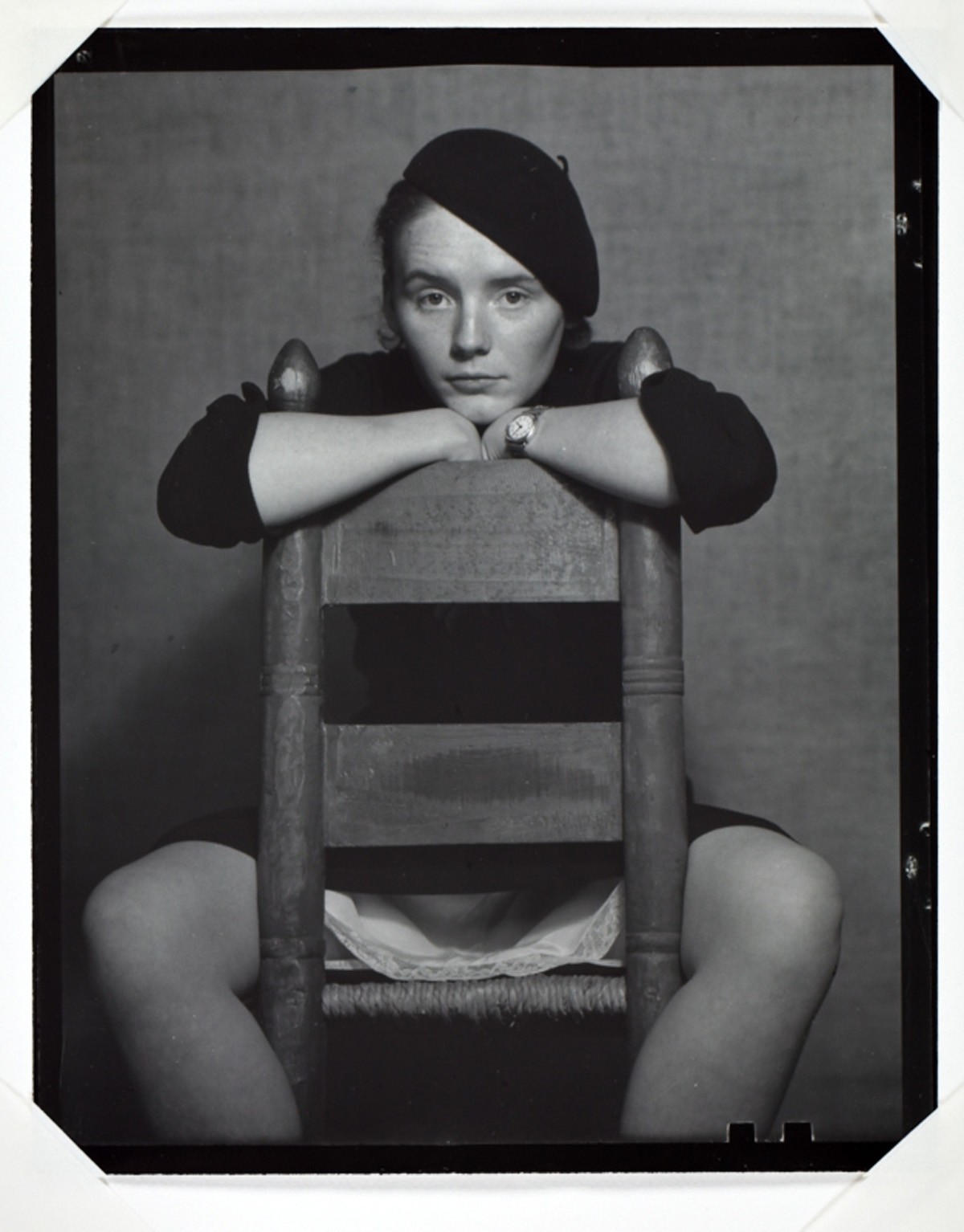
Edward Weston once said he saw no reason for recording the obvious, and his picture of a bedpan in “Stark Beauty: The Photography of Edward Weston” proves that point. On loan from the Capital Group Foundation to Bowers Museum through Sept. 17, Bedpan is one of 72 gelatin-silver photographs representing some of the best of Weston’s images. Amid the pristine nudes, unadulterated landscapes and celebrity portraits, a urinal would seem the least likely to be eye-catching, conjuring smells and sounds, the sterility of a hospital room, illness, and the private humiliations of body functions. Prizing the item’s form over its function, he has tipped it on its end, white against a black background, so it resembles a drooping flower severed from its stalk or a bird perched on a wire, its breast puffed out as it examines its surroundings.
The revelation inherent in common things is Weston’s modus operandi: The muscular curvature of the iconic Pepper 30, highlighting the sensual tension between the light and dark rippling flesh of the vegetable. In an intense closeup of a Cabbage Leaf we can see a lava flow, an ancient root system or lightning; a Red Cabbage Halved resembles a slice of brain, while White Radish looks like coupling, ecstatic bodies.
We see very few faces in the nude studies. The photographer is unlikely to have intended anything deeper, with the photographs less about the social provocation inherent in nudity than in a kind of artistic dissection, cropping the images, then studying their form. Sensuous closeups of hands covering genitalia, the glowing white of the skin against the murky shadow of pubic hair becomes a study in black-and-white contrast, with the body seen from the side, sitting, legs pulled tightly to the chest, focused on the ensuing lines and folds within the tight square of the image. The lone male nude in the show is of one of his young children, Neil; the boy’s tiny frame faces a wall, away from us, arms stretched above his head in pitiful surrender. The pictures are full of emotion despite their severity, but the lack of faces and no eye contact with the models also makes them feel as if they are variations of the still-lifes.
Weston took portraits to make money, and you can tell his heart really isn’t in it when he isn’t following his obsessions. The pictures are flat and uninteresting, with only a single portrait of Mexican artist Diego Rivera, half of his face cloaked in shadow, standing out. That lighting nods to Rivera’s literal dark side—something Weston no doubt understood, given his own penchant for philandering—and it gives an otherwise formal picture something resembling personality. The portraits of his family are entirely different: Neil, now in his 20s, sitting rigidly in a chair, tall and handsome, no longer the vulnerable child; another son, Brett, his assistant for many years, standing in the wild, next to his father’s box camera. There’s also the picture Weston took of the muse who became his second wife; Charis Wilson sits, facing the photographer, her hands tucked behind the top rail of the chair she’s sitting on. It’s a study in listlessness, the beret-wearing Wilson looking bored, as if fully aware that Weston’s eyes are drawn to the white slip draped between her open legs and not really her.
Weston’s isolated landscapes are slices of perfection that sharply illustrate the stark beauty of the show’s title: the pattern rows of tomato plants create as they dot a field like a blanket; discarded wood and wire in a pond, clouds reflected in the water; the roots of old trees still stuck in the ground; the Salton Sea when there was still sea; Death Valley dunes; the Big Sur coast; a decapitated, rotting saguaro cactus. In Yosemite Mists, the majesty of a mountain peak surrounded by haze is straight out of a Tolkien drawing, giving friend Ansel Adams some competition.
Weston was rarely one to throw subtext into his pictures. His job was representation, without social commentary, preferring to let the images speak for themselves. But the remaining pictures, as mentioned in the accompanying curating notes, are about technology forcing its way into Weston’s vision of unadulterated nature, leaving him no choice. The vast concrete of the Coolidge Dam, an abandoned shoe left on Moonstone Beach, collapsed staircases at MGM studios, the monotonous flatness of old shipyards . . . That foray, as brief and subtle as it is, causes you to rethink all that has gone before it. It’s impossible to not wonder what Weston’s work would have been like if he’d taken that road less traveled, leaving you with something more to consider than just the exhibition’s overwhelming beauty.
“Stark Beauty: The Photography of Edward Weston” at Bowers Museum, 2002 N. Main St, Santa Ana, (714) 567-3600; www.bowers.org. Open Tues.-Sun., 10 a.m.-4 p.m. Through Sept. 17. $10-$15; children younger than 12, free.
Dave Barton has written for the OC Weekly for over twenty years, the last eight as their lead art critic. He has interviewed artists from punk rock photographer Edward Colver to monologist Mike Daisey, playwright Joe Penhall to culture jammer Ron English.

